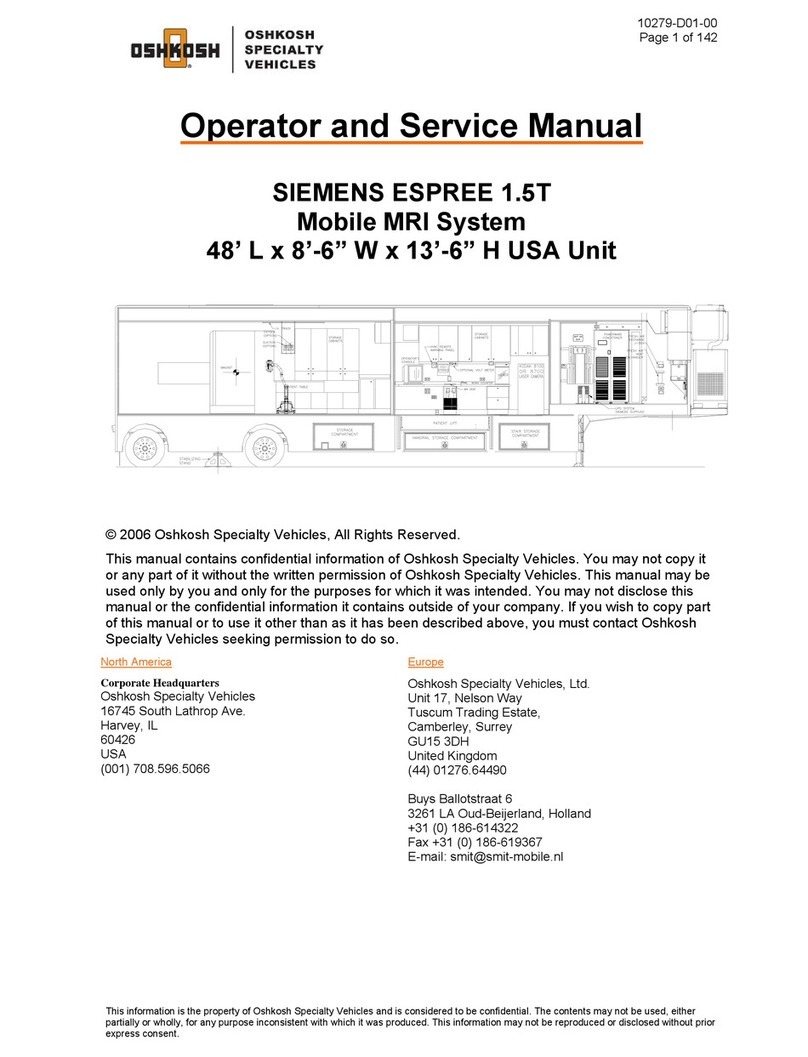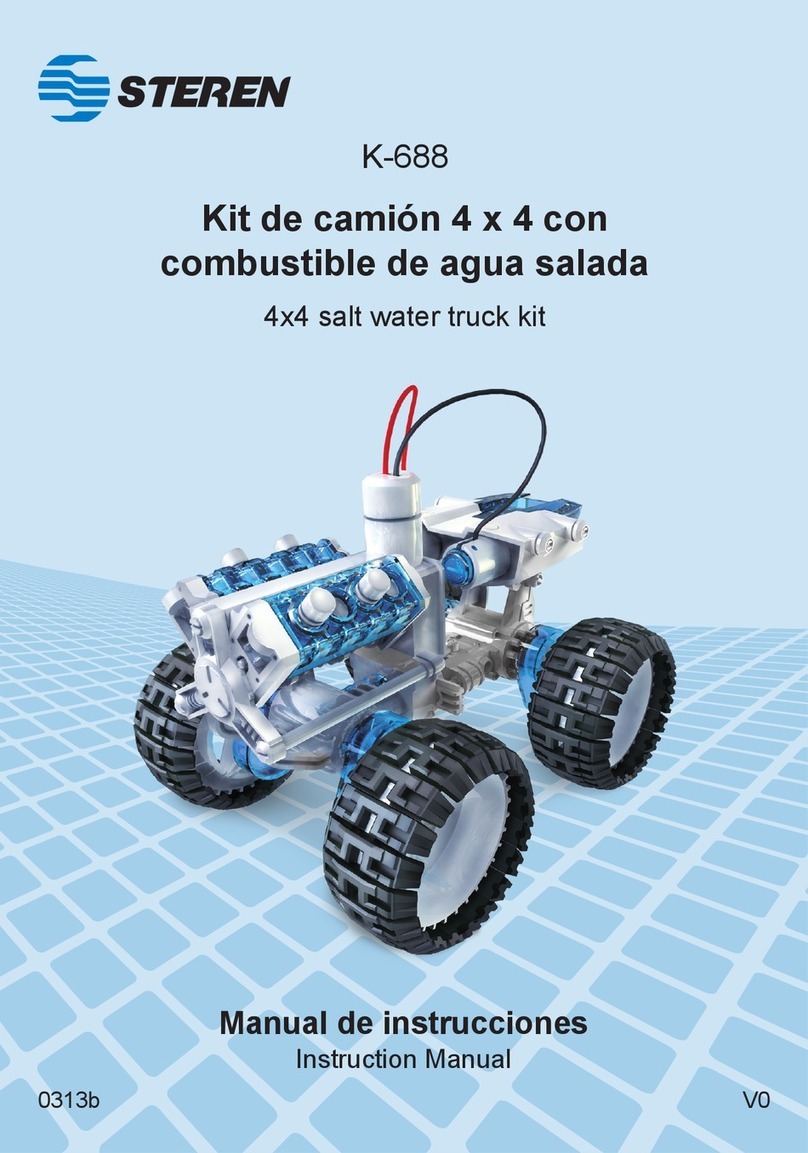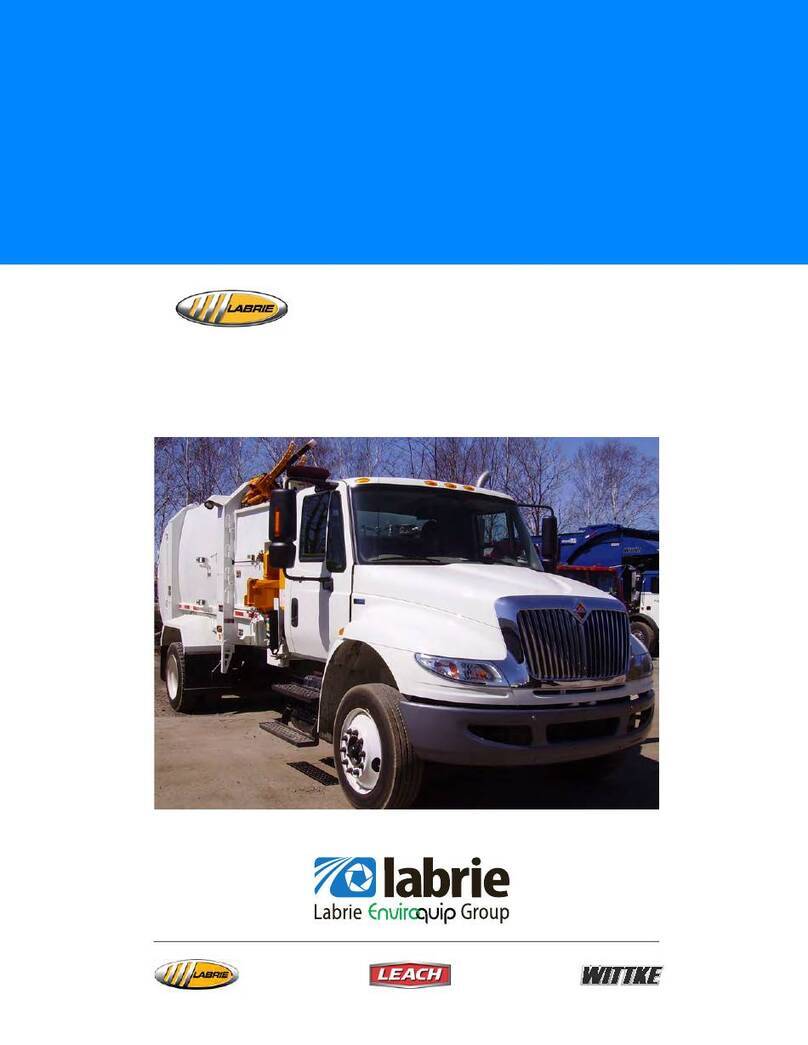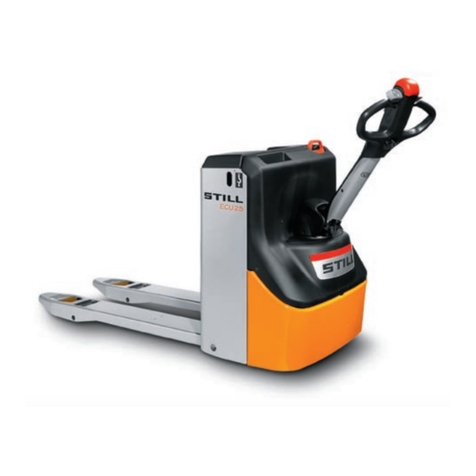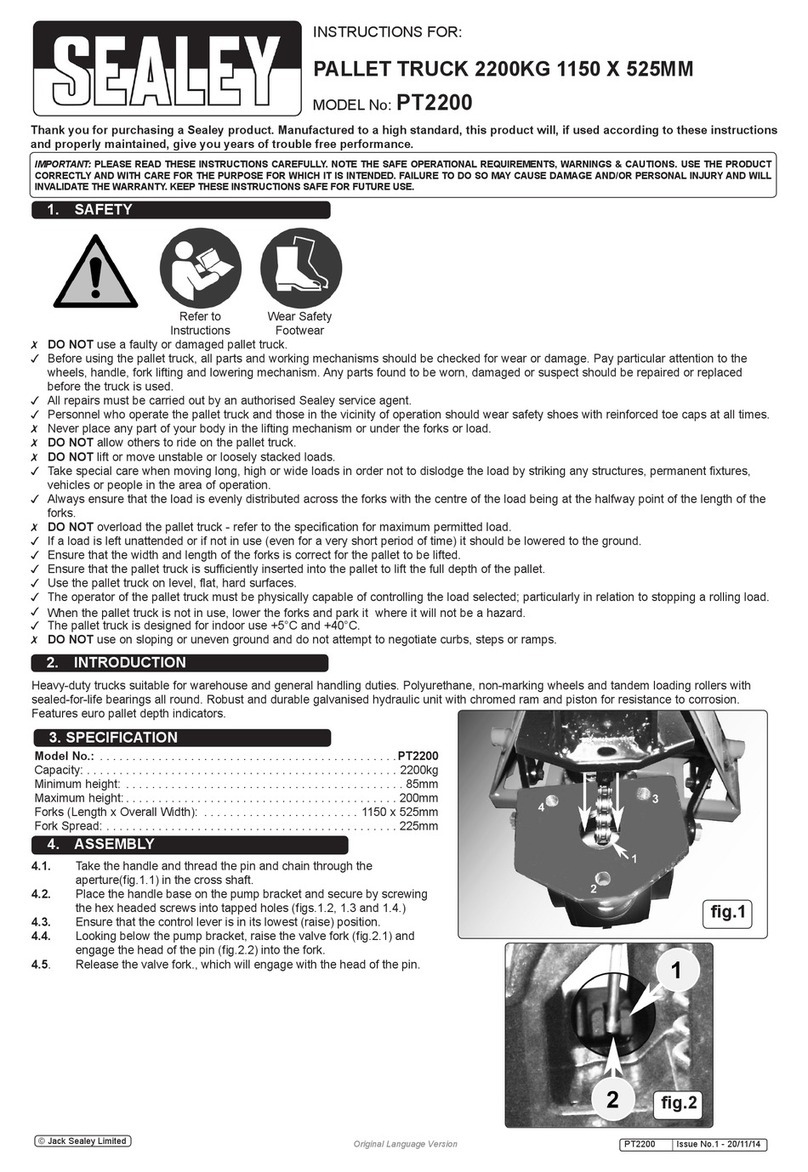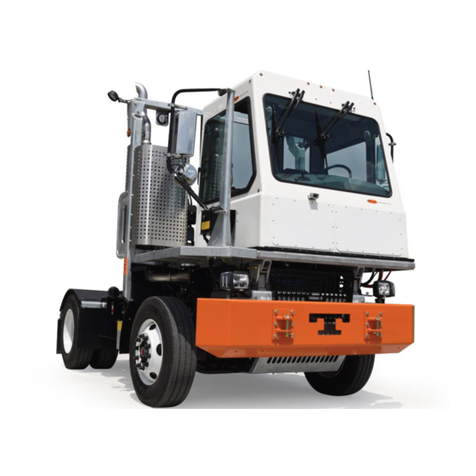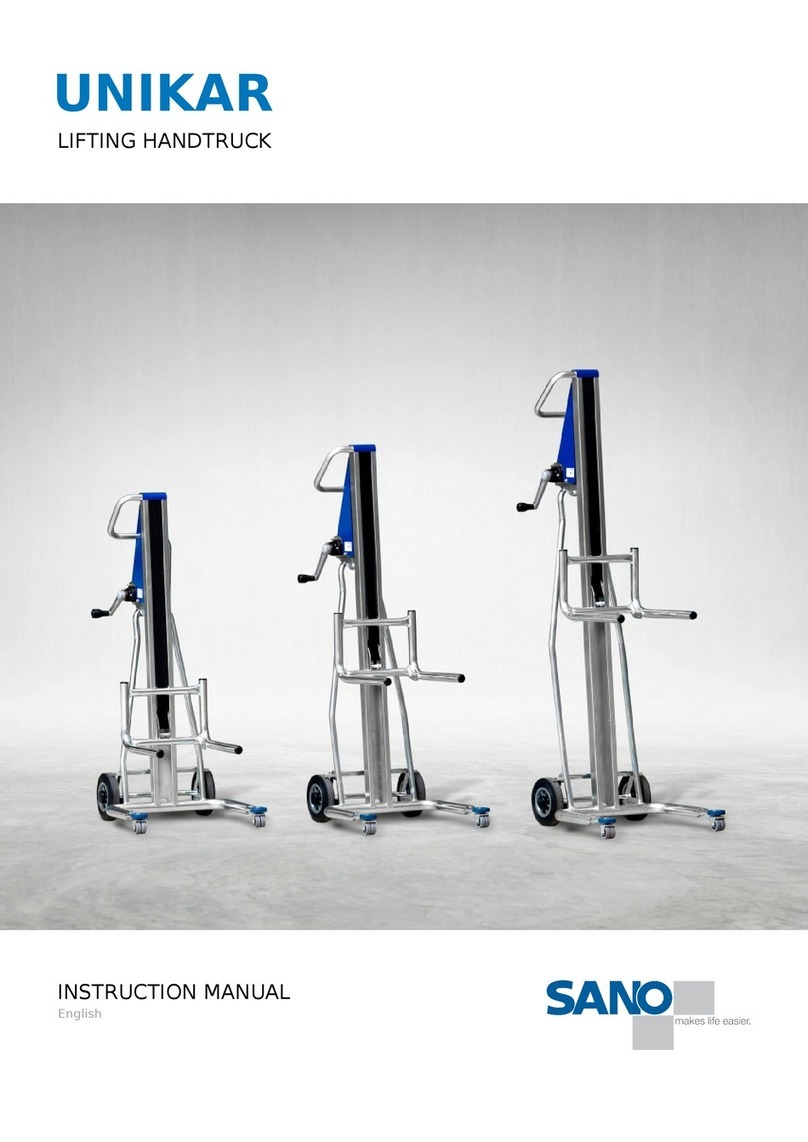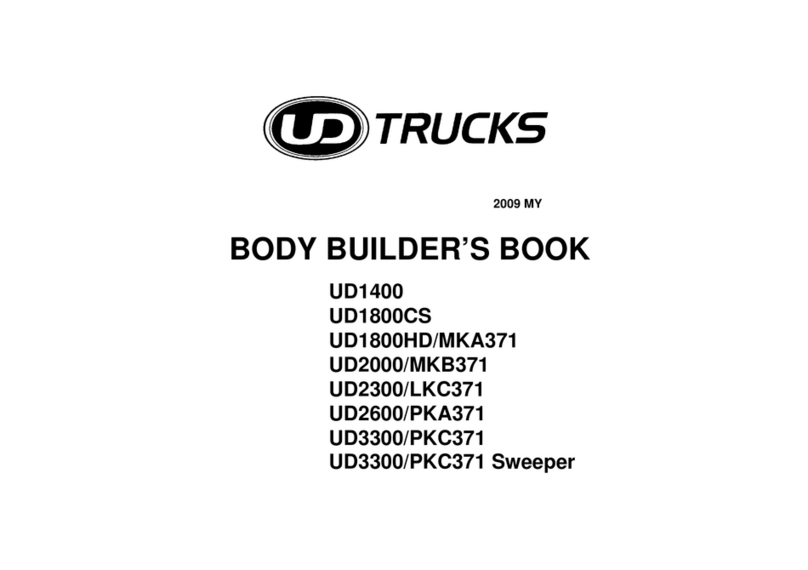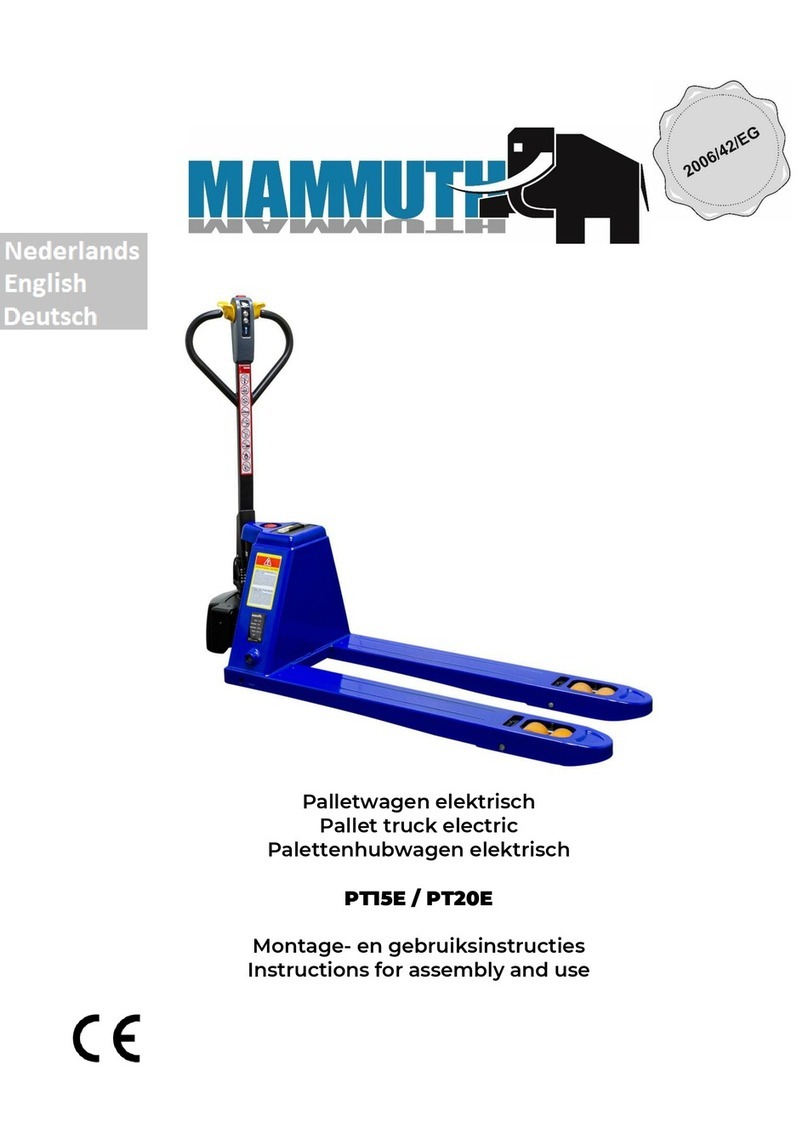Spartan CRIMSON FIRE GLADIATOR CLASSIC 2009 Instruction Manual

2009
SPARTAN/CRIMSON
GLADIATOR CLASSIC
Custom Pumper
GUIDELINES FOR OPERATION
OF
HIGH PRESSURE PUMPER

-2-
ACKNOWLEDGMENT
This manual is provided to you, the Engine Company members, by the Chicago Fire
Department and covers Operational and Maintenance Procedures which need to be
thoroughly understood and practiced, thereby ensuring both S FE and EFFICIENT
operation of your apparatus.
pplicable expertise from the manufacturers, Spartan Motors, Inc., Crimson Fire
pparatus Company, LTD., and Hale Fire Pump Division of Idex Corporation, has been
provided herein.
Basic, essential daily preventive maintenance items such as fluid checks of cooling
system, crankcase, fuel, power steering, the checking of tire condition, emergency
lights and warning devices, while not specifically addressed, are nevertheless normal
maintenance procedures.
DEFECTS ARE TO BE REPORTED VIA WORK ORDERS AND ARE TO BE
OBTAINED FROM THE DEPARTMENT OF FLEET MANAGEMENT.
Where any conflicts or differences may occur from previous apparatus operational
guides or procedures, this manual shall prevail on this particular apparatus.
T KE C RE OF IT, DON’T BUSE IT, ND IT WILL T KE C RE OF YOU.
Chicago Fire Department
Division of Training

-3-
INTRODUCTION
The 2009 Spartan/Crimson Custom Pumper has been manufactured following nearly
two years of effort by representatives of the Chicago Fire epartment and the
epartment of Fleet Management. The goal was to develop a design which best serves
the needs of the Fire epartment and more importantly, those individuals who operate
the apparatus.
Numerous issues were addressed in creating the final design of these pumpers which
included overall size, maneuverability, safety and comfort of personnel,
compartmentalization, pumping efficiency, hose bed configuration, as well as improved
visual and audible warning devices. The epartment of Fleet Management specified
chassis components which ensure a more durable and reliable apparatus to cope with
the severe duty which our apparatus is subjected to on a daily basis.
Considerable input was provided by field personnel which included officers, engineers,
firefighters, and firefighter/paramedics. While it is virtually impossible to design the
perfect apparatus, every attempt was made to include those features desired by the
majority of individuals involved in the process.
The new 2009 Spartan/Crimson Custom Pumper incorporates the best features of
previous apparatus plus new innovations which are available from the fire apparatus
industry to provide the safest and most efficient pumper design possible. It is the hope
of all involved that this apparatus will meet or exceed the needs of all personnel who
operate it.
This manual is provided to assist those individuals assigned to drive and operate the
2009 Spartan/Crimson Custom Pumper. It is each Engineers responsibility to read and
understand the information and instructions contained within this manual prior to
operating the equipment.

-4-
CHASSIS
Manufacturer: Spartan Motors, Incorporated
Model: Gladiator Classic
Cab Construction: Aluminum
Components:
• Detroit Series 60 - 12.7 Liter, 50 HP Turbo charged electronic diesel engine.
• Allison, Model HD4060 electronic 5-speed automatic transmission with 4th
gear lock-up.
• Switchable transmission retarder.
• Rockwell anti-lock brake system.
• 4-wheel disc brakes
• Self-leveling rear axle air suspension system.
• 6 maintenance-free gel-cell batteries with jumpers studs.
• GOODYEAR, Radial-Unisteel TD tires;
• 15 x 80R 22.5 - FRONT
• 11R x 22.5 - REAR
• 6 Gallon fuel tank.
• Racor fuel-water separator.
• Robert Shaw automatic chassis lubrication system.
• Wabco 1200 heated air dryer with moisture ejector.
• Hale FoamLogix . System
• LifeGuard SRS Side Roll Protection
• DPF (Diesel Particulate Filter)
• Redundant Lighting Circuit Switch
• Emergency Pump Shift
Cab Features:
• Hydraulic/electric cab raise, with manual backup pump
• Scene lights on both sides of cab
• Heated side-view mirrors
• Auto-eject 110 volt shore-line connector with battery condition meter
• Code light bar
• FEDERAL
METEOR
white oscillating light below windshield
• Chicago-style reinforced front bumper with air horn and FEDERAL Electronic
Q2 siren with 200 watt speaker.
• Load Manager lighting system
• Built in electric air compressor and battery conditioner

-5-
CAPACITIES
GROSS VEHICLE 42,000 lbs.
WEIGHT RATING Front axle capacity - 18000 lbs.
Rear axle capacity - 24000 lbs.
FUEL CAPACITY: 63 Gallons
CRANKCASE CAPACITY: 38 U.S. Q arts
Crankcase oil type - 15W40, API Classification CF4/SG
COOLANT CAPACITY: 55.5 U.S. Q arts - 50/50 mixt re of Ethylene Glycol and
water, which meets GM specifications
POWER STEERING: 7 U.S. Q arts - DEXRON III
TRANSMISSION: 39 U.S. Q arts - TRANSYND
FIRE PUMP: Hale 1500 G.P.M. Three-stage
P mp Model - Q-TWO 150-23S
P mp l bricant: SAE - 90 Gear oil - 3 Q arts
BOOSTER TANK: 500 Gallons
FOAM TANK: 30 Gallons
TIRE PRESSURES: FRONT - 130 P.S.I.
REAR - 120 P.S.I.
APPARATUS DIMENSIONS
TRAVEL HEIGHT: 10 Feet - 0 Inches
BODY WIDTH: 8 Feet - 3 Inches (incl ding r b rails)
9 Feet - 7 Inches (mirror to mirror)
LENGTH: 31 Feet
TOTAL LENGTH: 31 Feet – 6 Inches (front tow hooks to end of ladder)
WHEELBASE: 168 Inches
REAR OVERHANG: 7 Feet – 11 Inches

-6-
PUMPER BODY
Manufactur r: Crimson Fire Apparat s Co., LTD.
Construction: Stainless Steel with Al min m roll- p compartment doors
Boost r Tank: Booster tank is constr cted of Polypropylene and is “L” shaped
to provide for a lower hose bed height
F atur s:
• Reinforced hose bed cover with elastic band fastener
• 2 - hose bed dividers, both of which are adj stable
• Lift-off tray for 1¾" hose above 4" hose bed
• Rear compartment for folding attic ladder
• Hinged p mp ga ge access panel
• A tomatic p mp cooler
• AKRON - Model 3426 fixed-mo nt deck g n w/stream shaper and 1-3/8", 1½” ,
1¾", & 2" stacked tips
• A tomatic drain valves on deck g n and cross-lay beds which a tomatically open
when press re to these discharges drop to 5 PSI or less
• Two pper deck storage areas for foam containers, brooms, shovels, traffic
cones, and other miscellaneo s items
• AIR BLOWOUT system to assist in expelling water from discharge piping when
draining p mp in cold weather
• Two spotlights, one at each rear corner of the apparat s. One is eq ipped with a
spot lamp and the other has a flood lamp for scene lighting at rear of apparat s
• A tomatic compartment lights in all doors and compartments

-7-
FIRE PUMP
Manufacturer: Hale Products Division of Idex Corporation
Model: QTWO 150-2 S
Type: Three-stage centrifugal
Rated Capacity: 1500 Gallons per minute
1500 G.P.M. @150 PSI - - 1509 Engine RPM (nominal)
1500 G.P.M. @ 165 PSI - - 1550 Engine RPM (nominal)
1050 G.P.M. @ 200 PSI - - 1610 Engine RPM (nominal)
750 G.P.M. @ 250 PSI - - - 1460 Engine RPM (nominal)
Pump Shift: Hale Model VPS, air powered, cab controlled
Transfer Valve: Manual type, gear driven, pump panel mounted control
Pump Cooler: Automatic thermostatically controlled pump cooler
En ine Cooler: Full-time (non-switchable) Engine Cooler
Dischar es: Four 2½” (2) Engineer’s side, (1) Officers side, (1) right rear
Two 4” (1) officers side, (1) left rear
One " top mounted deck gun
Two 1½” cross-lays above pump compartment
Two 2½” (2) Officer’s Side High Pressure
Foam Dischar es: Two Cross-lay#1
Officers side right rear – Discharge # 4
Suction Inlets: Two - 6", one on each side of apparatus equipped with manually
operated valve
One - 5", with swivel elbow on front bumper and operated with air
switch on pump panel
One - 4", located on lower right side of rear of apparatus and
operated with air switch on pump panel
One - ", Tank to pump inlet line

-8-
PREVENTIVE MAINTENANCE OF PUMP
Pump Gear Box:
Use SAE 90 Weight Gear Oil. Check oil level on the front of the pump
gear case at the plug marked OIL LEVEL”. Oil level should be up to
the bottom of the of the plug opening. Level should be checked
monthly. While checking gear box oil level, look for evidence of water
contamination as indicated by a milky appearance of oil. If
contamination is noted, obtain a work order from the Department of
Fleet Management.
Auto Lube Bearing:
Check oil level annually. Oil should be up to the top of the reservoir.
Use SAE-EP 90 Wt. Gear oil. Oil fill is located on top of Auto lube
Bearing on the top front of the pump housing (small hex-key plug).
Pump Primer: Oil-less priming pump, environmentally friendly priming system which
requires NO reservoir. Consequently, there is no siphon-break hole to
check.
Tran fer Valve: Clean gears and re-lubricate with dry lubricant every six month.
Operate daily.
Valve Linkage : Clean push-pull rods and re-lubricate with dry lubricant every six
months. Lubricate valve rod pivot points with a light oil every six
months.
Pump Shift: Lubricate the shift cylinder (located behind the pump panel, under the
pump) at least once a year by squirting a few drops of light cylinder
oil into the shift cylinder.
Tank to Pump: Should be kept in the closed position until needed.

-9-
GENERAL PREVENTIVE MAINTENANCE
General daily preventive maintenance checks begin with essential fluid levels for
safe and reliable operation of the apparatus. Engine oil dipstick, engine oil fill
and windshield solvent can be checked and added in the drop down portion of
the front grille. A secondary motor oil dipstick is located on the right side of the
motor and is only accessible with the cab raised.
ENGINE OIL:
Use multi-grade SAE - 5W-40 motor oil with the proper API
classification performance code for diesel engines. The
dipstick is located as shown in Figure 1. Crankcase
capacity is 4 U.S. Quarts. The crankcase oil level should
normally be checked after the engine has been OFF for at
least 0 minutes to allow proper drainage back to the
crankcase.
TRANSMISSION:
Use TRANSYND transmission fluid. You must tilt the cab to access the dipstick.
Capacity is 39 U.S. Quarts. Because the transmission oil cools, lubricates, and
transmits hydraulic power, it is important that the proper oil level be maintained
at all times. If the oil level is too low, the converter and clutches will not receive
an adequate supply of oil - if the oil level is too high, the oil will aerate, the
transmission will overheat, and oil may be expelled through the breather or
dipstick tube. (A transmissi n diagn stic guide is included at the back f
this manual which utlines pr cedures f r utilizing the shifter keypad
t check the transmissi n status thr ugh a series f diagn stic c des.)
WARNING! WHEN CHECKING THE TRANSMISSION OIL LEVEL, BE SURE THE BRAKE
IS SET AND THE WHEELS ARE PROPERLY CHOCKED.
TRANSMISSION FLUID LEVEL CHECK:
Normal transmission fluid level check can be performed using the diagnostic
checks as outlined in the information sheet provided at the back of this manual.
However, if the dipstick is used, the following procedure is to be followed:
Figure

-10-
COLD CHECK:
• The only purpose of the COLD CHECK is to determine if the transmission has
enough oil to be safely operated until a HOT CHECK can be made.
• Park the ehicle on a le el surface and apply the brake as specified abo e.
• Run the engine for at least ONE minute. Shift to DRIVE (D) and then to
REVERSE (R), then shift to NEUTRAL (N) and allow the engine to idle.
• After wiping the dipstick clean, check the oil le el. If the oil le el is within the
COLD RUN band, the le el is satisfactory until the oil is hot enough to perform
a HOT RUN check. If the le el is not within the COLD RUN band, add or drain
as necessary to bring the le el to within the COLD RUN band.
HOT CHECK:
• Operate the transmission in DRIVE range until normal TRANSMISSION
operating temperature is reached. (140-220°F)
• Park on a le el surface, shift to NEUTRAL (N), apply the parking brake, chock
wheels and allow the engine to idle.
• After wiping the dipstick clean, check the oil le el. Safe operating le el is
anywhere within the HOT RUN band on the dipstick.
• If the le el is not within this band, add or drain as necessary to bring the
le el to within the HOT RUN band.
POWER STEERING:
Use Dexron III. Power steering fluid can be checked only when cab is raised.
Remo e the cap from the power steering reser oir and check the dipstick. If
necessary, fill until the proper le el is obtained.
FRONT AXLE HUBS:
Check for presence and le el of 90 Weight gear oil lubricant in each front wheel
hub. If lubricant is not isible or is low, obtain a work order. There is a strap
across the fill plug which pre ents filling by field personnel.
COOLANT:
The cooling system uses a 50/50 mixture of ethylene glycol antifreeze and water.
The system holds about 55.5 U.S. Quarts. Check coolant bottle as shown in
Figure 1 for proper le el. The radiator has a sight glass which is isible only
with the cab fully tilted and the radiator cap is accessible only with the cab tilted.
Wait until the engine has cooled if it becomes necessary to remo e the radiator
cap to add coolant.

-11-
CHASSIS LUBE SYSTEM:
The automatic chassis lubrication system pump and reservoir are located in the
upper front of the pump compartment, immediately below the cross-lay hose
beds. While it is not the responsibility of the engineer to refill the reservoir, the
lubricant level should be checked at least ONC ACH W K and a work order
obtained when it is less than one-quarter full.
The chassis lube reservoir shown in Figure
2 can be checked by lowering the hinged
gauge panel on the left side of the
apparatus, by removing the upper portion of
the pump panel on the right side of the
apparatus, or when the cab is tilted. The
reservoir is transparent to provide for
simplified checking of the fluid level
AIR SYSTEM:
An air hose connection is located below the drivers door, above the step. This
air hose connection is provided as an AIR INL T (figure 10) only, to be used in
the event the apparatus must be towed and there is inadequate air pressure to
release the parking brake.
An AIR OUTL T is located on the pump operators panel to the left of the large
side pump intake. This outlet is equipped with an air hose quick connect fitting
and a shut-off valve.
Check for operation of ejector valve on air dryer when compressor tops off air
tanks at approximately 120 PSI. Check air tanks periodically for evidence of
moisture. Drain air weekly, with shore line connected to apparatus to test
operation of auxiliary air compressor. If the auxiliary air compressor operates
frequently when the apparatus is in quarters, a leak should be suspected and a
work order may be required to locate and repair the leak.

-12-
CAB CONTROLS
UPPER DASHBOARD:
Figure 3 shows the upper portion of the
dashboard with the main gauges used to
monitor vehicle performance. Below is a list
of these gauges.
1. Fuel Level Gauge
2. Filter Minder (Air Filter estriction)
3. Tachometer with Digital Engine Hour Meter
4. Speedometer with Digital Odometer/Trip Meter (Message Center)
5. 4 in 1 Gauge
• Coolant Temperature
• Battery Voltage
• Oil Pressure
• Transmission Fluid Temperature
6. Primary and Secondary Air Pressure System Gauges
2
3
4
5
1
6
Figure 4 shows the systems warning light
cluster located in the uppermost portion of
the dashboard. The various lamps will
illuminate briefly when the ignition switch is
first turned on.
Figure 3
Figure 4

-13-
LOWER DASHBOARD:
1. Master Battery Switch
2. Ignition Switch
3. Engine Start Button
4. “ oad to Pump” Switch with Green “Pump Engaged” Lamps
The driver’s seat has several adjustments to
meet the preferences of each driver. Shown
in Figure 6 is the air switch used to adjust
the support for the driver which can be
adjusted to the driver’s weight. The seat can
be moved forward or back as required and
the backrest can be tilted as desired. There
is also a lumbar control for the backrest.
Figure 5 shows the lower portion of the
dashboard assembly. Below is a list of the
controls located on the lower portion of the
dashboard.
1
2
3
4
Figure 5

-14-
The upper forward section of the motor doghouse serves as a mounting for several
controls for the both the engineer and the officer. The items shown in Figure 7 are
listed below.
1. Windshield wiper switch
2. Panel light dimmer switch
3. Headlight switch
4. 3-Way Amber LED Warning light switch: Left=sequences left,
Center= andom flash, ight=sequences right
5. etarder switch
6. Heated mirror switch
7. Horn / Siren / Air Horn switch
8. Mud / Snow Traction
9. Transmission Keypad Shifter
10. Multi-Plex Screen
11. Parking Brake
12. adio
13. etarder “ON” light
14. Siren control
15. Officer’s speedometer
16. Spot Light
17. Flashlight
18. High Pressure PTO Toggle Switch
Figure 7
1
2
3
4
5
6
7
8
9
10 11
12
13
14
15
1
8
17
16

-15-
OFFICER’S SIDE DASHBOARD:
The M.D.C. is mounted directly in front of the
Officer’s seat where the glove box would
normally be located (Figure 8). A special
module was designed for mounting the M.D.C.
which includes a slide-out tray for the
keyboard.
The siren control module is located on the engine doghouse immediately to the left of
the officer’s seat ( ee Figure 7). The Federal EQ2B siren is an electronic siren which
accurately emulates the sound of the electro-mechanical Q2 siren which is by far, the
most popular siren in use by the Fire Service throughout the USA. Because the siren is
an electronic design with an amplifier and speaker, it also has a PA function with a
separate microphone from the radio microphone. The unit can be set to function in the
PA mode or a choice of siren mode functions and includes an electronic horn switch.
Because the siren takes several seconds to wind-down in the wail or manual functions,
a “Brake” switch is provided to silence the speaker in less than two seconds. To
operate the siren from the officer’s siren foot pedal or the horn button on the steering
column, the mode function switch on the siren control head must be set to the
“MANUAL” function.
MISCELLANEOUS CAB FEATURES:
Mounted in the ceiling of the cab interior, directly to the rear of the windshield defroster
unit, is a warning light to indicate an open cab or compartment door. This is a bright
red LED light which flashes rapidly when a cab or compartment door is still open
whenever the parking brake is released.
Just to the rear of the open door warning light is a dome light with two map lights
which are switched independent of the dome light.
Above each cab door is a combination white and red dome light. The red light can be
used to provide minimal illumination in the cab without distracting the driver.

-16-
A small on-board air compressor is mounted on the cab floor behind the driver’s seat.
This compressor ensures adequate air pressure when an alarm is received. It should be
tested weekly by deliberately draining the apparatus air supply. This can be
accomplished by repeatedly pumping the air brake pedal with the motor shut off.
A battery conditioner/charger is mounted on the cab floor under the rearward facing
ump seat. The battery conditioner is provided to ensure that the apparatus batteries
are maintained with sufficient charge to start the apparatus motor while in quarters,
offsetting the constant draining of the batteries by the M.D.C. and G.P.S. systems. AC
power to the battery conditioner is provided by the shore-line.
The ALS compartment, located behind the officer’s seat, is equipped with AC outlets to
provide power for charging ALS equipment. Power for these outlets is provided by the
shore-line.
A specification plate is mounted on the
engineers sun visor inside the cab. The
specification plate (Figure 9) lists the axle
ratings, G.V.W.R., paint codes and Vehicle
Identification Number. Also listed are the
various fluids for the apparatus and their
capacities to serve as a reference for the
operator as well as service personnel.
Figure 10 shows the battery umping
terminals located immediately below the
driver’s door. The terminals are protected
with rubberized, color coded caps (red-
positive and black-negative). The umping
terminals can be used if the apparatus must
be ump started or to use the apparatus
batteries to ump start another vehicle. Also
pictured is the previously mentioned Air
Inlet.
A large white scene light is mounted on each side of the cab exterior for illuminating the
work area on the sides of the apparatus. Each scene light has its own switch mounted
on the switch panel on the engine doghouse.

-17-
PUMP AND PUMP C NTR LS
The Hale QTWO-23S pump (Figure 11) installed in this apparatus was designed to
meet or exceed the performance requirements specified by the Chicago Fire
Department. Working closely with the pump and apparatus manufacturers, Department
representatives attempted to develop a design which provides superior flow
characteristics for L.D.H. discharges, a deck gun design that provides maximum
versatility, and a user-friendly pump panel configuration.
An additional intake is provided on the rear of the apparatus in response to requests
from numerous field personnel.
The main goal in configuring the pump operators panel was to place the operating
handle/control and discharge gauge for each discharge as close to the actual discharge
port location as possible. This enables the operator to quickly locate the appropriate
control and gauge.
The large hand-wheel for controlling the L.D.H. discharges are required due to the size
of the valve supplied to control these discharges.
A return to the use of the horizontal sliding discharge handles for the side mounted 2-
1/2" discharge ports was specified as the design provides ease of regulating the hand-
lines most often connected to these discharges.
The medium size hand wheels located on the left side of the pump panel are for the
high pressure discharge ports.
Figure 11

-18-
Figures 12 and 13 show the location of the external remote radio control head and
microphone. In order to provide a position convenient to the pump operator and yet
not vulnerable to the elements, the control head and microphone are mounted inside
the “Engineers Compartment”. To avoid re uiring the door of this compartment to
remain open during pumping operations, the microphone is mounted to the inside of a
small door which can be opened to access the microphone when pumping. The control
head in the compartment need only be accessed when changing the radio channel or
adjusting the volume on the external speaker which is mounted above the pump
operator’s panel.
The water level gauge shown in Figure 14 is
located at the top center of the pump
operator’s panel. The water level is indicated
by 20 LED bars with indicators at each uarter
of the scale. As the water level decreases, the
LED’s shut off from right to left. At 25%
remaining water in the tank, the LED’s which
have shut off will begin flashing to alert the
pump operator that the water level is less than
25%.
The front and rear suction inlets to the pump
have air-operated valves. The front and rear
intake switches shown in Figure 15, while
appearing to be electrical switches, are
actually air switches which can be immediately
switched from one position to the other. They
are designed to open or close the intake valve
slowly as re uired by N.F.P.A. standards.

-19-
While the operation of this pump is similar to earlier models, there are some new
innovations as well as required accessories that should be discussed. The following is a
list of these items.
SUCTION RELIEF VALVE:
N.F.P.A. STAN AR 1901 requires that all
new pumpers be equipped with an automatic
intake pressure relief system. This system
helps protect the intake side of the pump
from excessive pressures, as may be
encountered when working from a wall
hydrant or during an in-line operation. Each
of the four suction inlets to the pump are
equipped with an intake relief valve as shown
in Figure 16. With an operating range of
75-250 PSI, the intake relief valves on this
apparatus are adjusted to open at 125 PSI.
SELF-BLEEDING DRAINS:
The two cross-lay beds and the deck gun are equipped with self bleeding drains which
open automatically when the pressure on these discharges drops below 5 PSI.
AIR BLOWOUT SYSTEM:
The pump is equipped with an air blowout
system which will help to drain the entire
pump of water. This will be especially useful
during cold weather. The instruction plate is
found at the upper right portion of the pump
operator’s panel as shown in Figure 17.
SLOW CLOSE DEVICES:
N.F.P.A. STAN AR 1901 dictates that all intakes/discharges 3" or larger be equipped
with slow open/close devices to reduce the likelihood of water hammer when these
valves are operated. Therefore, front and rear intakes are so equipped with the air
operated intake valves mention earlier.

-20-
The large side intakes are equipped with manually operated valves, which are opened
or closed with a hand wheel.
As mentioned earlier, the L.D.H. discharges have hand wheel operated valves, which
prevent rapid opening or closing. The deck gun has a valve, which requires extra effort
to open or close to comply with this standard.
BLEEDER VALVES ON INTAKES:
The large side intake valves are quipped with leeder valves on the out oard side of the
valve. The front intake has 2 drain valves, one in front and one ehind the front axle,
and the rear intake has a leeder valve handle elow the rear intake port.
When receiving water into any of these intakes through 4" hose, such as quick water or
in-line operations, these leeders should e left open until a steady flow of water is
present efore opening the intake valve. This will prevent air from eing forced into
the pump, which can cause damage.
ELECTRONIC PRESSURE GOVERNOR:
Earlier apparatus equipped with electronic pressure governors utilized the
Captain
model, which contained the pump controls in one panel and the engine data in a
separate panel. The
Fire Commander II,
incorporates oth functions into a single unit.
The operations of oth models are identical with the exception of a few minor
differences.
Due to the extensive information required for the safe and efficient operation of the
Electronic Fire Commander II
, a separate manual is eing supplied with your new
apparatus to assist engineers and certified extra drivers in ecoming familiar with this
device. It is recommended that a copy of the manual e kept in the apparatus as a
reference.
All new engines are eing equipped with E
electronic pressure governors to control the
fire pump. Figure 18 shows the control
panel for the
Fire Commander II,
pressure
governor installed on this apparatus.
Manufactured y
Class 1,
it is designed to
operate pumps powered y
Detroit Diesel
engines.
Figure 18
Table of contents
Popular Truck manuals by other brands

Scheppach
Scheppach DP4000 Translation of original instruction manual
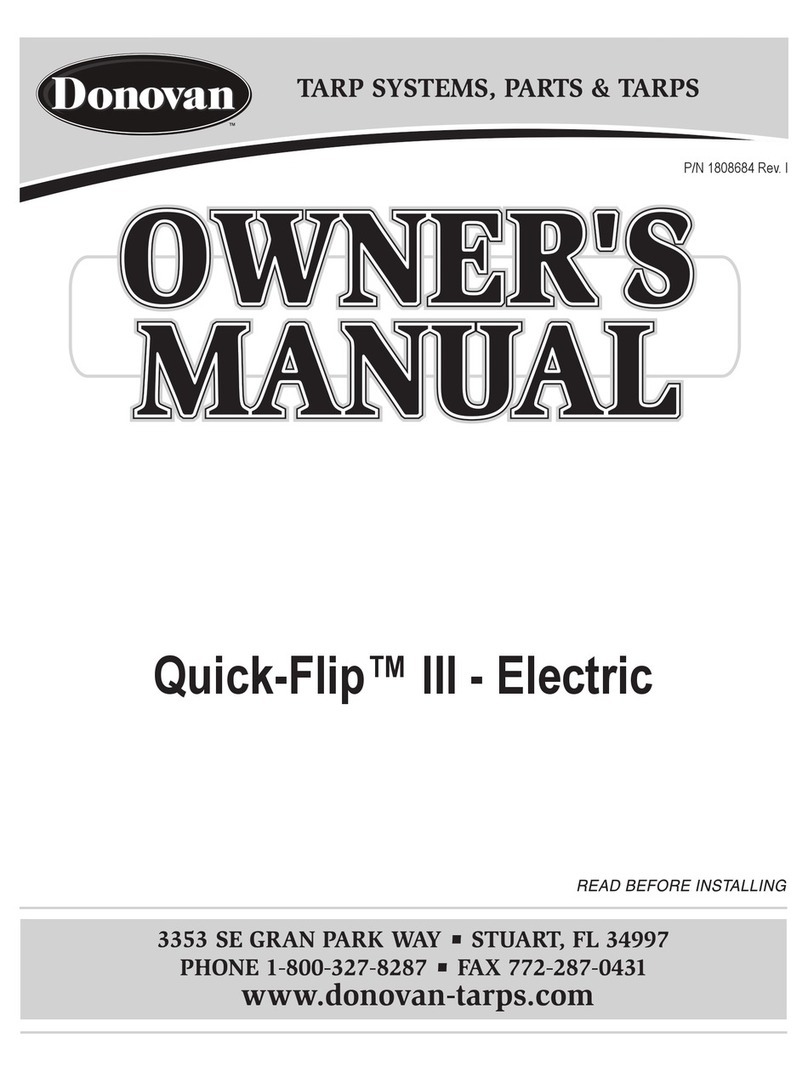
Shurco
Shurco Donovan Quick-Flip III owner's manual
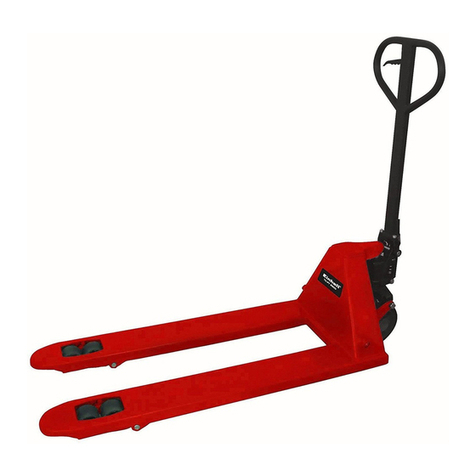
EINHELL
EINHELL TC-PT 2500 Original operating instructions
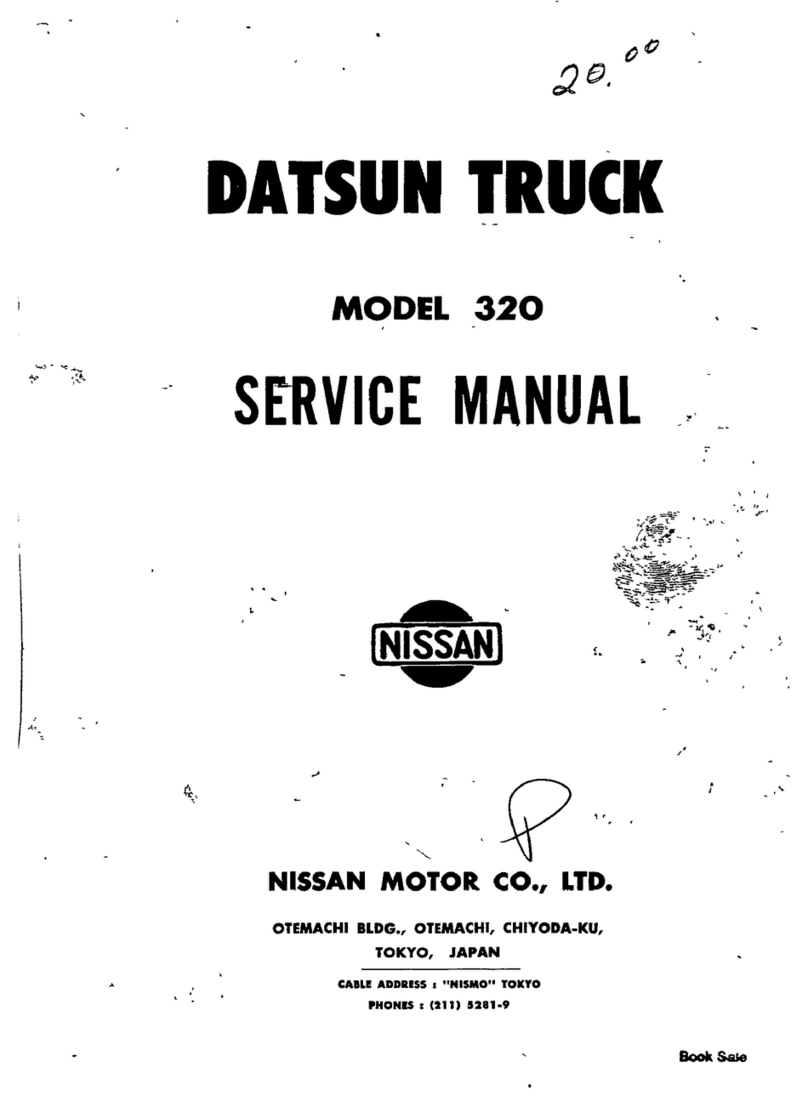
Datsun
Datsun 320-U Service manual

Jungheinrich
Jungheinrich EFG-Vac 22 operating instructions
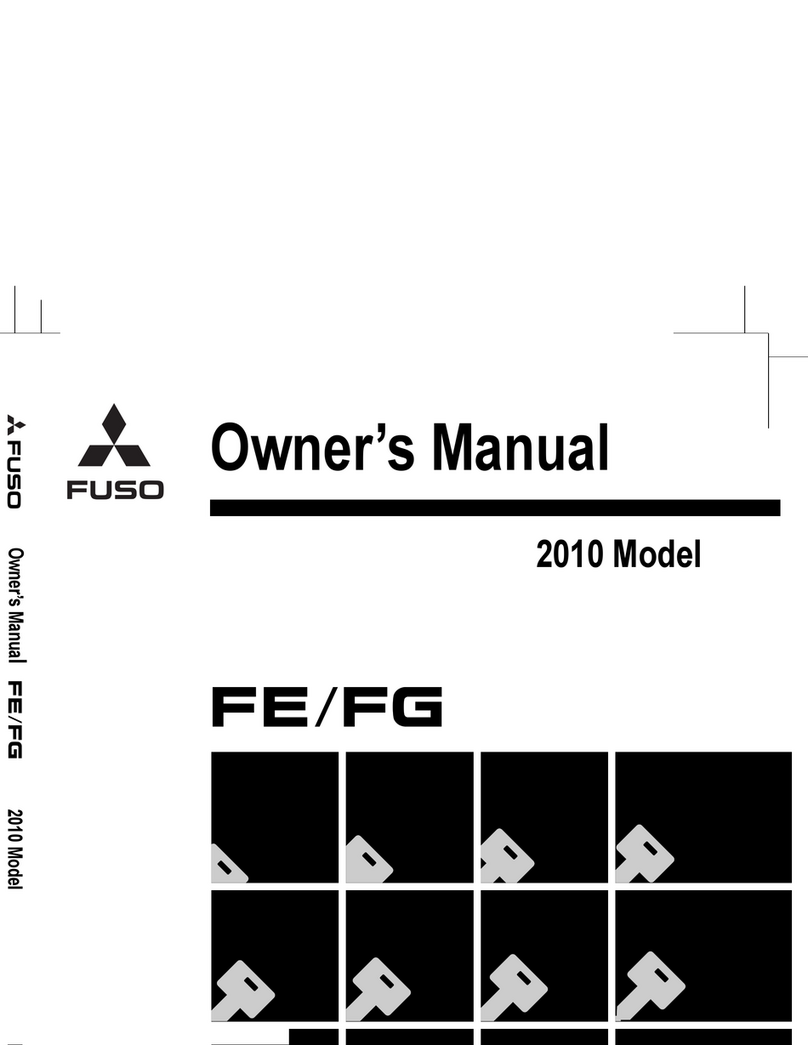
Mitsubishi
Mitsubishi 2010 Fuso FE owner's manual
